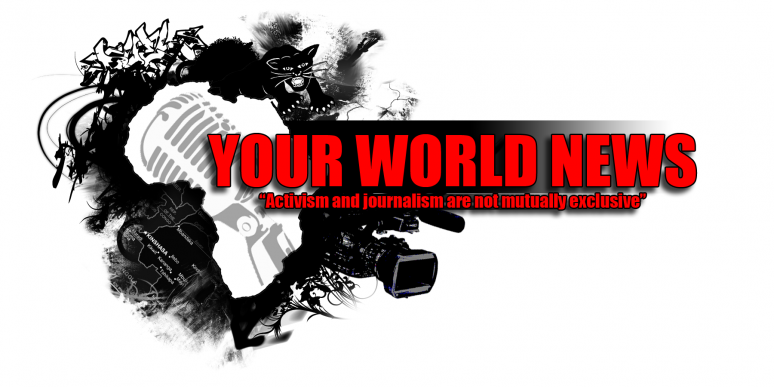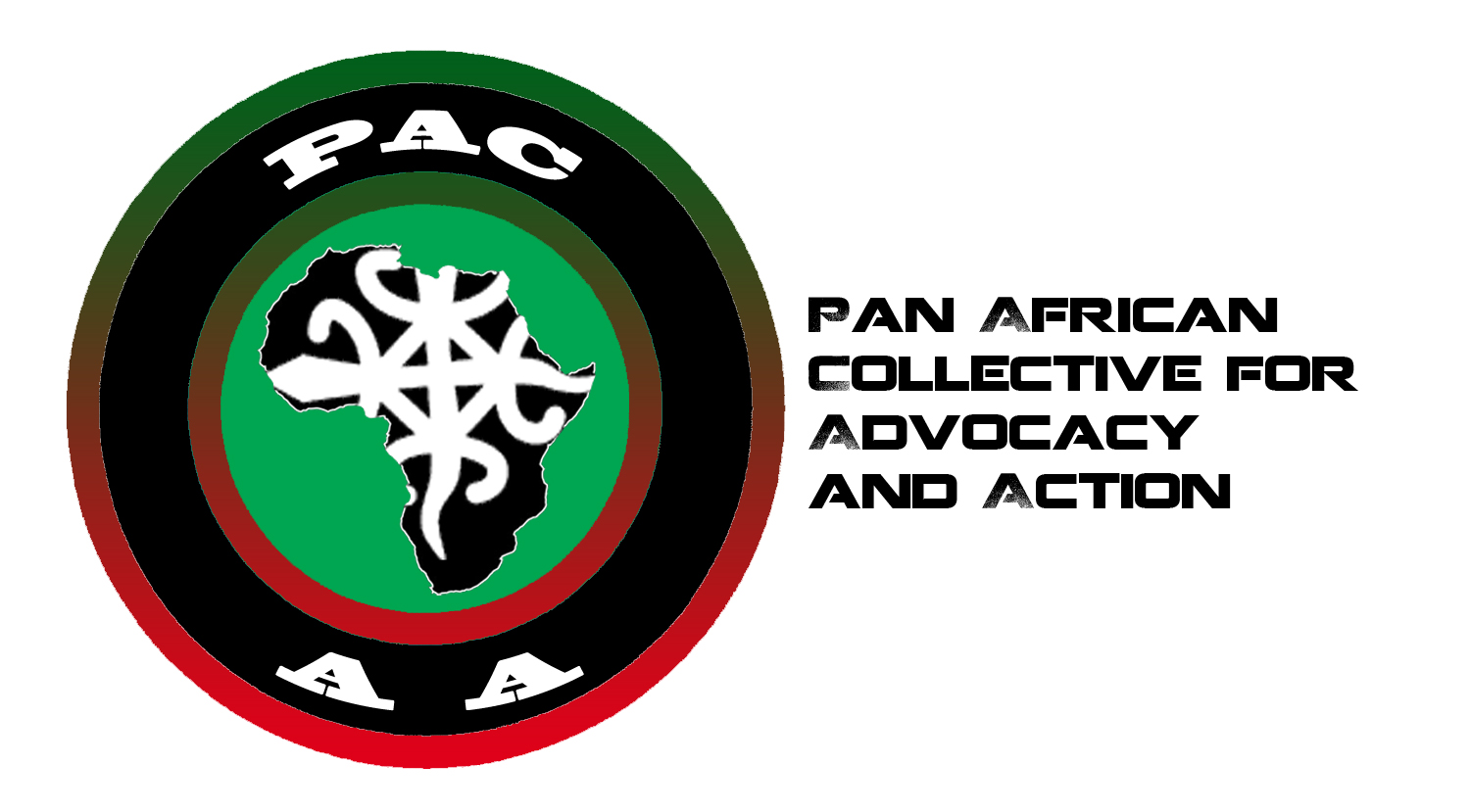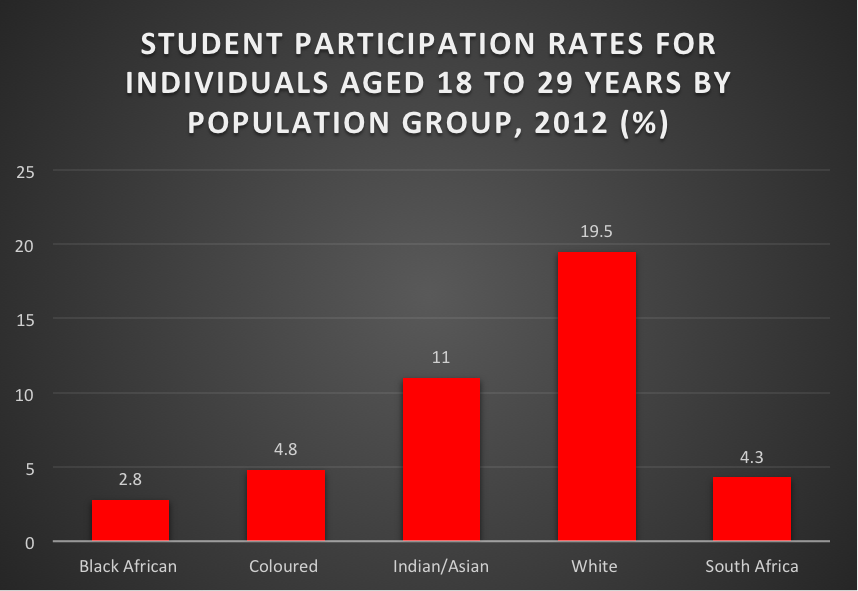Re-examination: Beyond Nelson Mandela & Azania/South Africa
Composed by members of the Pan-African Collective for Advocacy & Action
December 5, 2013 marked the passing of Nelson Rolinhlahla Mandela. He made his ultimate transition to the ancestors at age 95. The man often referred to as ‘Mdiba’ (his Xhosa clan name), or Mandela, gave much of his life towards the necessary struggle aimed at dismantling the brutal and inherently racist system of Apartheid within Azania (South Africa). The Europeans who stole his country’s land, brutalized his compatriots, and viciously imposed Apartheid on native Azanians (South Africans) eventually imprisoned Nelson Mandela for 27 years for his activist work.
Nelson Mandela was a member of one of the several organizations committed to liberating indigenous Azanians from the brutal grip of European colonization. Apartheid is a racist and oppressive instrument used by colonizers, much in the same way it is used in places like Palestine to this very day.
The organization in which Mandela did much of hi work was the African National Congress (ANC). He was also a co-founder of the militant wing of the ANC known as Umkhonto we Sizwe (MK). Mandela’s work and sacrifice to the overall struggle of ending Apartheid are invaluable. His work was one of the many components that contributed to the eventual ending of Apartheid in 1994. Nelson Mandela would perhaps be the first to tell the world that his work was not isolated and that there were many players involved in the struggle to end colonization within Azania/South Africa.
The reactionary and disingenuous corporate media, along with the US government, have already begun their methodic propaganda campaign to not only limit the full scope of Nelson Mandela’s work (namely his work before he was imprisoned), but to also write out of history the larger struggle to end colonization throughout Southern Africa. This targeted revisionist history also desperately attempts to suppress the numerous players involved in this struggle, and the critical roles they played throughout. These individuals and organizations most certainly want the Western masses to forget that there still exists an economic Apartheid within South Africa, as well as a white minority stronghold on native land. Western masses may not know this, however most Azanians have never lost track of this inconvenient truth.
The following is a position paper composed by members of the Pan-African Collective for Advocacy and Action. Our position paper not only addresses the reactionary approach to Mandela’s death many are taking, but to also remind people of the current unacceptable condition black people are languishing in throughout today’s South Africa. The struggle is far from over. Native Azanians continue to need our support.
This paper is also a reminder that individuals, organizations and countries like (but not limited to): Fidel Castro, Che Guevara, Cuba, Steve Biko, Black Conscious Movement (BCM), South African Students Organization (SASO), the Pan Africanist Congress, Zimbabwe, Robert Mugabe, the Zimbabwe African National Union, Zimbabwe African People’s Union and numerous others, also contributed to the liberation of Southern Africa. Without exposing these aspects of history does a tremendous disservice to all who committed their lives to the liberation of indigenous people throughout that part of the world.
If we are truly inspired by the work of the aforementioned people, organizations and countries, including Nelson Mandela, we must not lose track of the fact there remain important struggles to be fought. We must also avoid contradiction in our work. We must remain consistent ideologically, as well as in our liberation-oriented labor. For instance how can we support the ending of brutal sanctions in countries like Zimbabwe? How can we help end the United States’ Blockade on Cuba? These are questions we must seriously address and, hopefully, turn into tangible actions aimed at helping to end these kinds of unwarranted sanctions. If we are unwilling to constructively address these issues then we must consider that our adoration for people like Mandela is simply in vain, for it was not for the likes of Cuba, Zimbabwe and Libya, “Madiba” may not have been freed when he was and Apartheid in Azania/South Africa most likely would not have ended when it did. We, members of the PACAA, strive to continue to use our organization as a vehicle built for revolutionary change. Properly educating and organizing each other, collectively, is an important step towards that change.
Listed below are some seldom-reported facts and figures regarding today’s South Africa. Ignore the distraction of the corporate media, and disingenuous Western politicians, who try to convince you life in South Africa is great for Blacks. Remind yourself of the current situation and let it be motivation to organize (collectively) to end these inequities in South Africa, and worldwide! We must embrace the objectives of Pan-Africanism and seek to utilize our collective resources to help end the oppression of Africans—-not matter where they are. Forward Ever, Backward Never!
Reality within today’s South Africa
HIV/AIDS and Structural Violence
Despite the efforts to bring social equality to Black South Africans by Mandela and others, a majority of its black population are still victims of structural violence in the post-apartheid era. The impact of structural violence on the health and well being of Black South Africans is overwhelmingly evident that structural violence is pervasive and endemic in the cities and suburbs of Johannesburg, Capetown, Durban and Pretoria. One might ask, how can a structure be violent? And in what ways does structural violence manifest itself in direct violence? By definition structural violence refers to the systemic and systematic ways in which social structures harm or otherwise disadvantage individuals. According to Galtung, the first structural violence theorist to coin the phrase structural violence, the theory provides a framework for understanding how structural inequalities violate the human rights of some people. Few have applied this framework of violence in the discourse on human rights and the myriad of ways that structures violate, marginalize and slowly kill groups of people. Although many theorists consider structural violence as subtle and invisible, in the context of South Africa, the impact of structural violence among black South Africans is highly visible. Without question, apartheid, was one the highest forms and examples of structural violence. But the effects of apartheid which still linger almost two decades after its abolition has resulted in the unequal life chances of many black South Africans. For example, there is no person that directly harms those black South Africans infected with HIV/AIDS and tuberculosis rather the structural inequalities rooted in blocking the opportunities of many from receiving adequate education, healthcare and social justice are at the heart of structural violence. Galtung asserts, ‘there may not be any person who directly harms another person in the structure, the violence is built into the structure and show up as unequal power and consequently as unequal life chances. Violence is an avoidable impairment of fundamental human need or to put in more general terms, the impairment of human life, which lowers the actual degree to which someone is able to meet their needs below that which would otherwise be possible.’ Galtung presents this example: if a person died from tuberculosis in the 18th century it would be hard to conceive of this as violence since it might have been quite unavoidable, but if a person dies from it today, despite all the medical resources in the world then violence is present according to our definition.
One has to ask the question why so many black South Africans, as a group, still suffer from high rates of HIV/AIDS, tuberculosis, unemployment, poor housing conditions, extreme poverty and violence if these problems are avoidable and preventable? This is not coincidental, or accidental, the limited life chances of many poor black South Africans are born from an unequal distribution of resources, where the power structure that sits atop of Azania decides the distribution of resources. That power structure can be defined as the black elite who has become complicit with the exploitation of their own people and the minority of whites who has consolidated their power and wealth among those within their esoteric social, political and economic networks. To date, South Africa ranks 3rd in the world in terms of tuberculosis, with an incidence rate that has increased over 400% in the last 15 years. South Africa also has one of the highest HIV and TB co-infection rates with an HIV prevalence of almost three-quarters among people with incident tuberculosis. Despite accounting for just 0.7 percent of the global population, South Africa accounts for 28 percent of the world’s people living with both HIV and TB (WHO, 2009). South Africa also has the highest prevalence of HIV/AIDS compared to any other country in the world with 5.6 million people living with HIV, and 270,000 HIV related deaths recorded in 2011. We argue that not only is the epidemic a form of structural violence but more importantly it is a violation of human rights. Because the overwhelming majority of those persons impacted by this epidemic are poor Black South Africans, we would also assert that structural violence is a structural violation of human rights.
As we celebrate the life of Madiba, we cannot forget that the country he spent almost a third of his adult life behind bars for, continues to be characterized by the vast unequal distribution of resources, where poor black South Africans are still victims of the most vicious and insidious form of violence, that which is imposed upon them by an oppressive structure. Paul Farmer, another structural violence theorist posits, “human rights can and should be declared universal, but the risk of having one’s rights violated is not universal.” There must be a serious commitment to make the structure accountable for the violence it has imposed upon the millions of victims suffering from HIV and TB, particularly the black bodies it has left in its wake. The application of the structural violence framework is central in the indictment of the structural violation of human rights imposed by the South African government against black South Africans. This is a position, which we at PACAA believe must be included as a viable theory in understanding the global and universal oppression of all Africans. The deprivation of life, where black life is viewed as cheap, worthless and disposable is a form of violence which we cannot forget as we lay Madiba to rest.
Poverty
Even the South African government’s own statistics show a dramatic gap between the well-being of the black and white population on all fronts, including income levels, employment, health, and education. Below PACAA draws from recent survey and census data to highlight examples of the disparities between different population groups.
1) THE AVERAGE INCOME OF WHITE HOUSEHOLDS IS SIX TIMES THAT OF BLACK HOUSEHOLDS
The chart below shows average annual household income broken down by the population group of the household head in both 2001 and 2011. The average income of Black households in 2011 was just 60,613 rands compared to 112,172 for ‘Coloured’ households, 251,541 for Indian/Asian households and 365134 for White households.
In fact, rather than closing, the income gap between Black and White households has increased drastically in the last decade, from a difference of 171,298 rands in 2001 to 304,521 rands in 2011.
Source: PACAA using data from Census 2011, Statistics South Africa http://beta2.statssa.gov.za/publications/P03014/P030142011.pdf
2) SOUTH AFRICANS ARE DYING FROM DISEASES PERPETUATED BY POVERTY
South Africans suffer from the world’s highest rate of tuberculosis (TB) per capita. TB is a chronic infectious disease, most often affecting the lungs but in cases it can also attack other parts of the body, such as the joints, bones, the nervous system and lymph nodes (1). According to government statistics, TB is the number one cause of death in the country, with 11.6% of mortalities in 2010 attributable to the disease. Despite being a treatable and curable disease it is estimated that 80% of young adults in South Africa are infected with TB (2). TB is known as a disease of the poor, who often live in overcrowded dwellings and poor environmental conditions with limited access to treatment perpetuating its spread. People with weakened immune systems and other respiratory diseases are at the risk of a latent TB infection developing into the active disease. Many South African miners as well as populations living near mining centers have also been found to have silicosis, a respiratory disease resulting from exposure to silica dust from nearby mines. In addition to the continued theft of their natural resources, black communities are also forced to suffer the health impacts of mining activities. While richer populations can afford to live on higher ground, thus avoiding the dust from the mines, poor Black South Africans often live in townships and communities where the toxic dust is carried down.
| CAUSES OF DEATH | RANK | % |
| Tuberculosis | 1 |
11.6 |
| Influenza and pneumonia |
2 |
7.2 |
| Intestinal infectious diseases |
3 |
5 |
| Other forms of heart disease |
4 |
4.7 |
| Cerebrovascular diseases |
5 |
4.5 |
| Diabetes mellitus |
6 |
3.9 |
| Human immunodeficiency virus [HIV] disease |
7 |
3.4 |
| Hypertensive diseases |
8 |
2.7 |
| Chronic lower respiratory diseases |
9 |
2.4 |
| Other viral diseases |
10 |
2.3 |
| Other natural causes |
43.3 |
|
| Non-natural causes |
8.9 |
Source: PACAA using data from Mortality and causes of death in South Africa, 2010: Findings from death notification, Statistics South Africa http://beta2.statssa.gov.za/publications/P03093/P030932010.pdf
3) WHITES ARE SEVEN TIMES AS LIKELY AS BLACKS TO BE IN HIGHER EDUCATION
Black South Africans continue to be underrepresented relative to their population at institutions of higher education. The chart below shows the student participation rates for individuals between the ages of 18 and 29 in 2012. While almost 1 in 5 Whites in this age group were enrolled in higher education, the figure for Blacks is glaringly lower at 1 in 36.
Source: PACAA using data from General Household Survey, 2012, Statistics South Africa http://beta2.statssa.gov.za/publications/P0318/P0318August2012.pdf
Other references:
(1) http://www.health24.com/Medical/Tuberculosis/TB-in-south-africa/10-quick-TB-facts-20120721
(2) http://www.health24.com/Medical/Tuberculosis/News/Eliminating-TB-in-South-Africa-20130531
Things to Remember, Study, Do & Focus on:
1. The history of Mandela is the history of the ANC
2. The history of the ANC cannot be told in isolation from the history of PAC and BCMA (Black Consciousness Movement of Azania) /AZAPO (Azanian People’s Organization)
3. The Democratic machine wants to reduce the history of the struggle in what is called South Africa to the history of Mandela and the ANC (African National Congress)
4. We pay tribute to Mandela and ANC by reaffirming that Zionism is a direct enemy of African people
5. We pay tribute to Mandela and ANC by reaffirming that the Palestinians have our unconditional support
6. We pay tribute to Mandela and ANC by fighting to lift the US blockade on Cuba
7. We pay tribute to Mandela and ANC by fighting to lift US-EU sanctions on Zimbabwe
8. We pay tribute to Mandela and ANC by intensifying our efforts to smash the prison industrial complex and freeing our prisoners of war
9. We pay tribute to Mandela and ANC by correcting the error of ignoring the Sharpeville/KwaLanga massacre on March 21st 1960 that is now celebrated as human rights day in what is called South Africa.
10. We pay tribute to Mandela and ANC by correcting the error of ignoring the Soweto Uprising on June 16th 1976 that they have renamed as Youth day, but is celebrated all over the world and also called the Day of the African Child.
11. The death of Mandela provides us with a golden opportunity to recognize the heroic and gallant efforts of not only PAC and AZAPO but also all the liberation movements in Southern Africa whose activity on the battlefield paved the way for Mandela and ANC to preside over what’s called South Africa.
FRELIMO in Mozambique
MPLA in Angola
SWAPO and SWANU in Namibia
ZANU/PF in Zimbabwe
12. We must write the true history of the anti-apartheid movement worldwide in the diaspora that is riddled with inaccuracy and straight out lies.
The founding members of the Pan African Collective for Advocacy & Action (PACAA) composed this report. Those members are: Solomon Comissiong, Joseph Richardson, Obi Egbuna, Jr., S. Alagraa, and Benjamin Woods. For more information please visit: www.thepacaa.org



